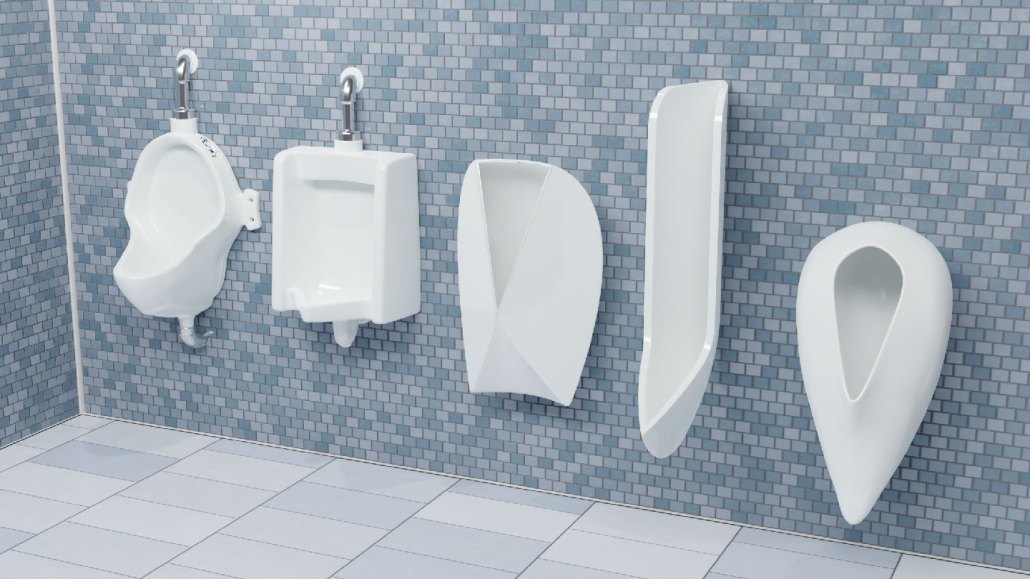
Among urinal prototypes, a tall, slender design with curves reminiscent of seashells (second from the right) accommodates people of a wide range of heights, virtually eliminating splash back.
M. Shi and Z. Pan/University of Waterloo

Among urinal prototypes, a tall, slender design with curves reminiscent of seashells (second from the right) accommodates people of a wide range of heights, virtually eliminating splash back.
M. Shi and Z. Pan/University of Waterloo